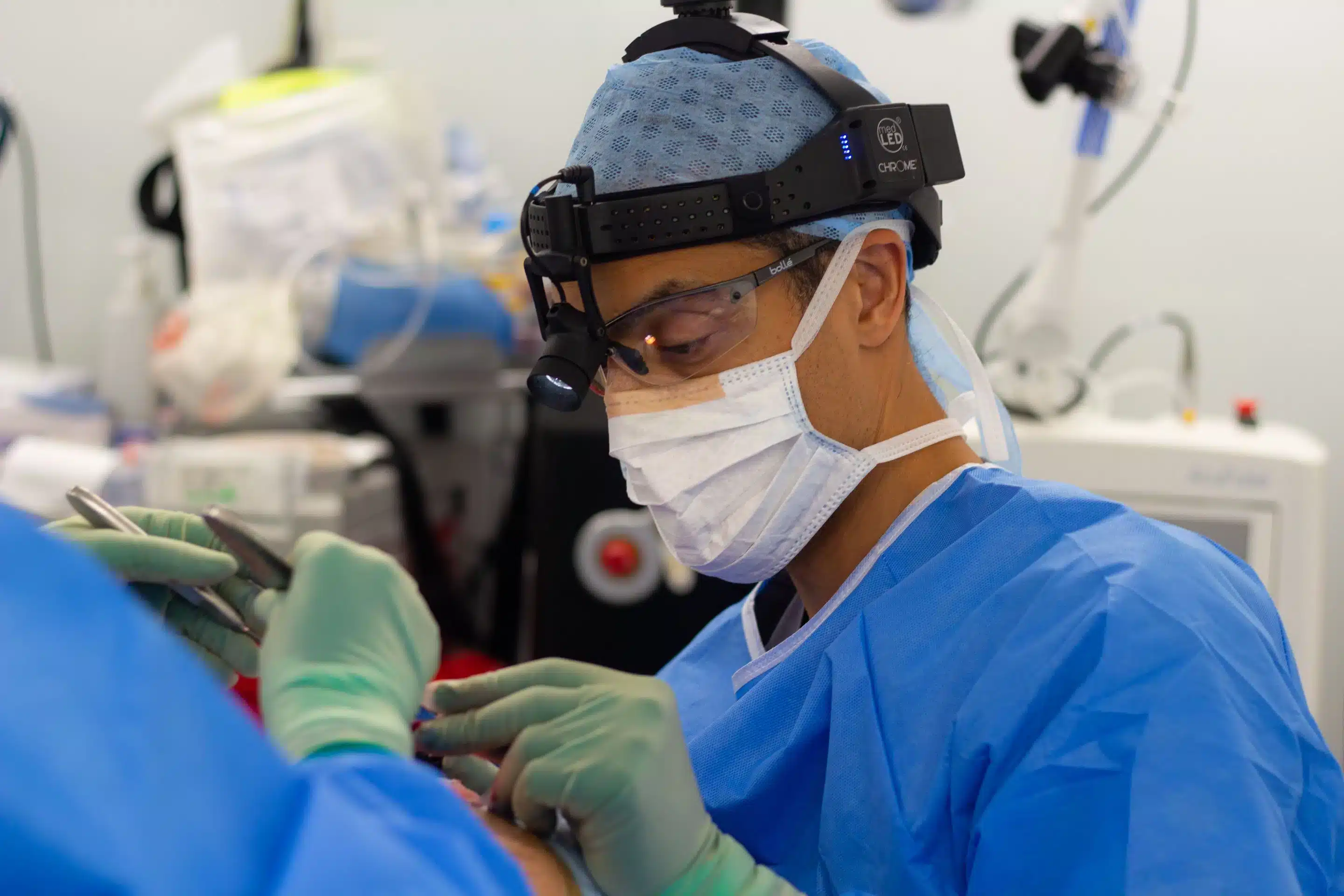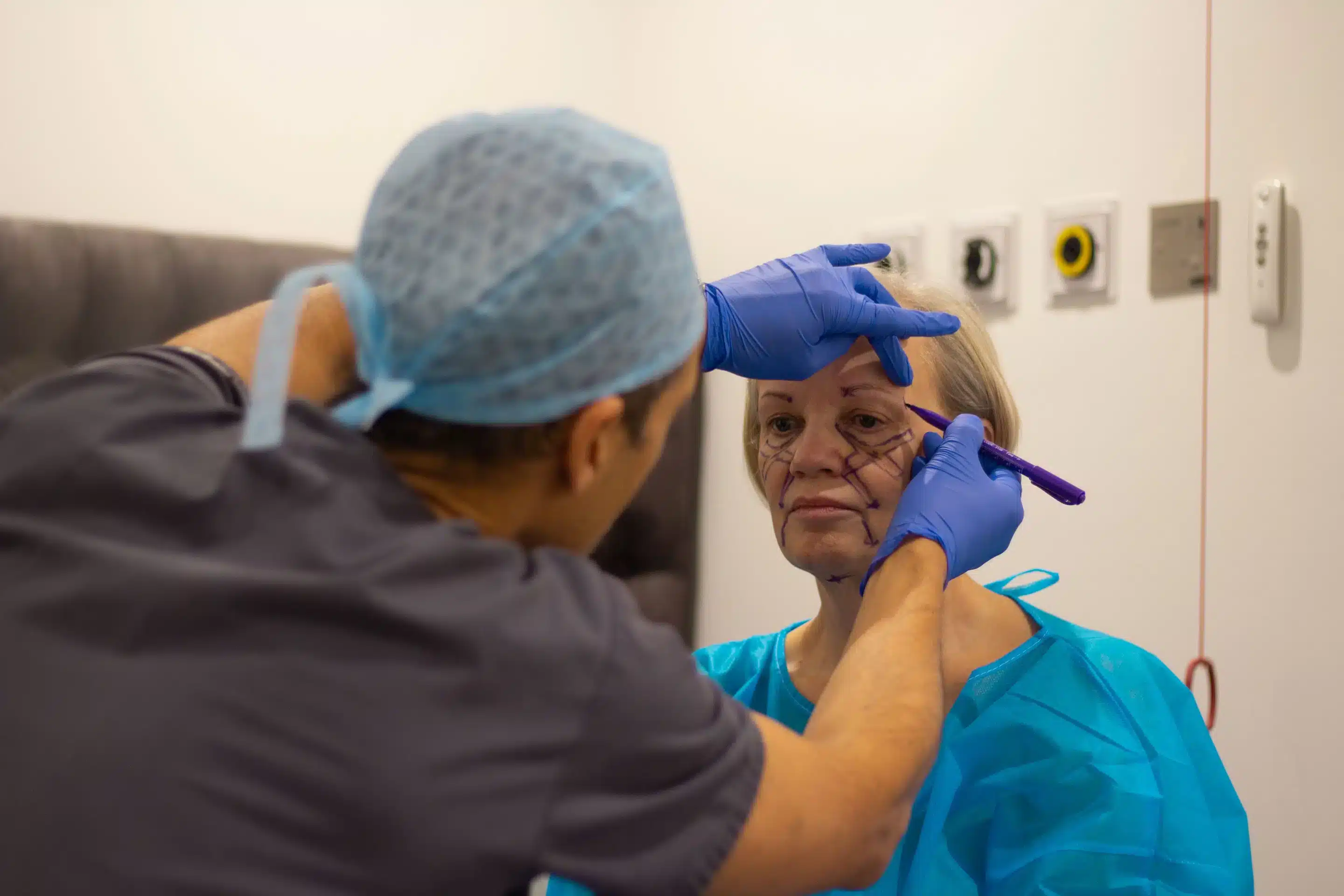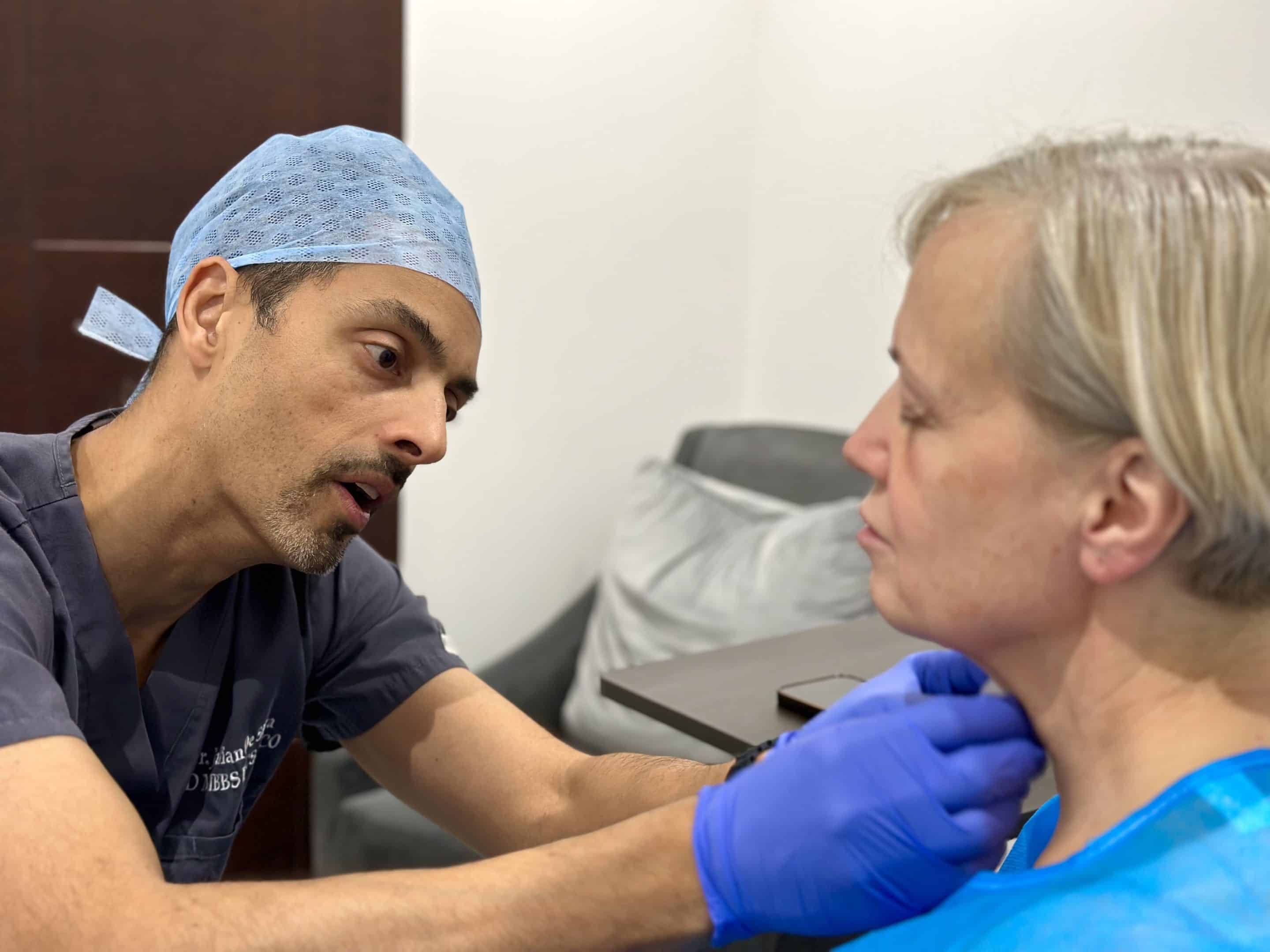
Rhinoplasty, or fondly known as a nose job, can change your nose’s shape, size, and overall look. While often performed for cosmetic reasons, rhinoplasty can also solve breathing difficulties and other functional nasal issues.
One lesser-known benefit of this treatment is enhancing the quality of a person’s voice, especially if the patient has nasal speech. In this article, I will discuss how nasal surgery can help fix nasal speech.
How Do You Fix a Nasally Voice?
There are several surgical and non-surgical ways to fix nasal speech. Some of the most common methods include the following:
Rhinoplasty
Rhinoplasty, while often done for cosmetic goals, can change the shape of the nose. As a result, it can improve how air flows through your nasal passages.
To solve your nasal speech, your rhinoplasty surgeon will change the internal structures of your nose, including your nasal septum or the turbinates, to enhance airflow and decrease nasal congestion or obstruction.
Septoplasty
Septoplasty is a procedure designed for deviated septum, which refers to the displacement of the bone and cartilage that separates the nasal passages. A deviated septum can lead to nasal congestion or obstruction, affecting your voice by making it sound nasal or congested.
During a septoplasty, your plastic surgeon will access your septum through your nostrils. Next, they will reshape, reposition, or remove any parts of the septum blocking your nasal passages. Doing these can improve airflow through the nose, resulting in a clearer voice.
Speech Therapy
If one’s nasal voice is caused by a speech or language disorder, speech therapy can help. When done properly by a qualified practitioner, speech therapy can also decreases the nasality in the patient’s speaking voice.
Voice Therapy
A speech-language pathologist can teach techniques to help change how a person produces sound and reduce nasal air emission in the process. This may include how to control the velopharyngeal valve, how to do breathing exercises, and how to use different vocal tract parts (e.g., vocal cords) to speak.
How Do You Tell if Your Voice Is Nasal?

It’s important to note that some people naturally have a more nasal voice than others. Should there be a noticeable shift in your vocal quality or if you face challenges in breathing or have nasal blockages, seeking medical advice is essential.
Here’s how you might identify a nasal voice:
- Your voice takes on a heightened, more nasal tone.
- It appears as though you’re articulating through the nose rather than the oral cavity.
- The clarity of your voice diminishes, suggesting sound isn’t emerging from the mouth appropriately.
- Struggling with certain sounds, such as “s” or “f,” indicative of specific airflow patterns.
- Presence of a whistling or buzzing quality to your voice, hinting at air movement via nasal passages.
Factors Causing Nasal Speech

Several factors can cause nasal speech. Some of the most common causes include:
Nasal obstruction
Any condition that causes nasal congestion or blockage can cause airflow problems that lead to a nasal voice. A deviated septum, polyps, or other structural abnormalities in the nose can cause this.
Speech or language disorders
Speech or language disorders such as cleft palate or velopharyngeal insufficiency can also cause nasal speech.
Sinusitis
Inflammation of the sinuses can cause nasal congestion and affect how a person speaks.
Velopharyngeal Dysfunction (VPD)
Velopharyngeal dysfunction is a condition that affects the ability of the soft palate and the pharyngeal muscles to properly close off the nose’s cavity when speaking, resulting in hypernasality or nasal emission.
The causes of velopharyngeal dysfunction can be congenital or acquired. Scarring from previous surgeries or medical conditions can also cause it.
Neurological conditions
Certain neurological conditions, such as cerebral palsy or Bell’s palsy, can affect the muscles used for speech and cause a nasal voice. A brain injury can also cause nasal speech.
Habits
Some people may develop a habit of speaking through their noses, making the voice sound nasal.
Cleft Palate
A cleft palate occurs when a person is born with an opening in the roof of the mouth. This opening can affect the normal development of the nasal and oral cavities and the structures responsible for speech production.
When a cleft palate is present, the normal movement of air during speech can be altered, causing a buildup of pressure in the nasal cavity. This can result in a nasal-sounding voice and other speech difficulties, such as hypernasality and nasal emission.
What Does It Mean to Have Nasal Speech?
A nasal tonality often indicates an elevated pitch and nasal sound due to the sound echoing more within the nasal cavity than the mouth.
This voice might exhibit a whistle or buzz due to air movement within nasal routes. This can stem from obstructions in the nasal region, like misalignment of the septum or growths, or it could be a result of habitual nasal speech.
Other causes include conditions affecting the speech muscles like cerebral palsy or Bell’s palsy. Factors like sinus infections, allergies, or even some speech conditions can lead to nasal vocal quality.
Understanding Nasal Resonance

Nasal resonance emerges when air causes vibrations in the structures within the nasal cavity.
This resonance is a standard feature of speech, enriching the voice’s depth.
It’s produced as air travels via the oral and nasal cavities, influencing both the hard and soft sections at the roof of the mouth.
The opening and closing of the velopharyngeal valve (junction of the soft palate and throat rear) determine the air’s route during speech, influencing resonance. Nasal resonance is crucial for vocal depth but can be excessive in certain conditions.
Septoplasty Explained

Septoplasty aids in breathing and rectifies structural deviations.
It’s a procedure designed to address misalignment in the septum – the structure diving the nasal pathways. A deviated septum can impede airflow.
Diagnosing Nasal Voice
A combination of physical checks and detailed medical history helps in diagnosis. The medical professional may use special tools or scopes for a comprehensive internal examination. They may also assess speech patterns and sounds made by the patient.
In some cases, the doctor may also order additional tests to get a better look at the inside of the nose and throat.
The Role of Cosmetic Procedures

Rhinoplasty, a cosmetic procedure for the nose, can enhance its aesthetics. Additionally, it can solve functional challenges like breathing issues and may benefit those with a nasal voice quality. This procedure modifies both the internal and external framework of the nose, addressing deviations or reshaping the nose.
Will My Voice Change After Rhinoplasty Surgery?
Rhinoplasty surgery can affect the voice, but the changes will depend on the specific changes made during the surgery.
If the surgery is performed to correct a deviated septum or remove nasal obstructions such as polyps, it can improve airflow through the passages. This can lead to a clearer and less nasal voice.
However, if the surgery is performed to change the shape of the nose, it may cause temporary changes to the voice. The changes may be due to swelling and inflammation in the area or the healing process. These changes are temporary and will disappear as the healing process progresses.
Visit Dr. Julian De Silva – Rhinoplasty, London
Want to know more about nose jobs? Check out our post about everything you should consider before getting a nose job to learn more about the rhinoplasty process.
Do you suffer from nasal structural problems? Are you disturbed by your nasal voice? Let one of London’s best cosmetic surgeons help you.
Book a consultation with me, Dr. Julian De Silva, now! As an alternative, you may visit us at 23 Harley St, London W1G 9QN, UK.





